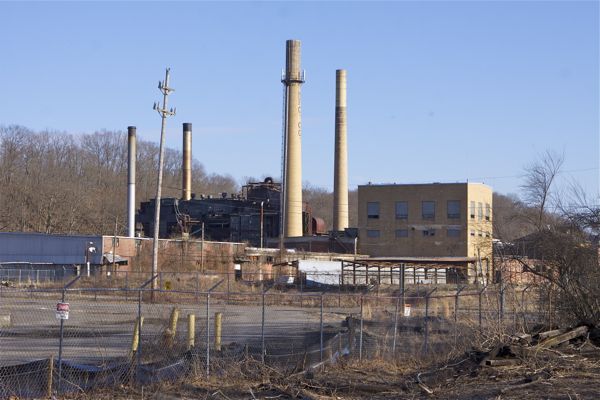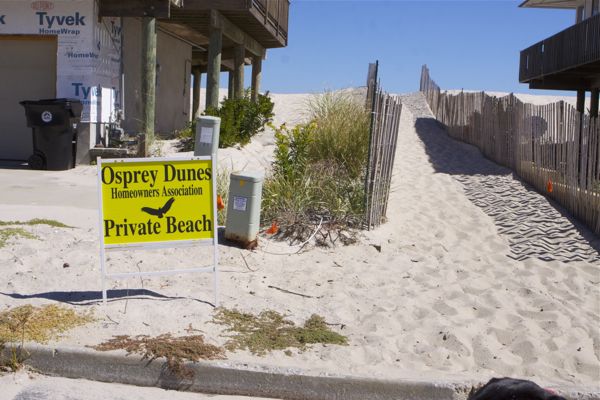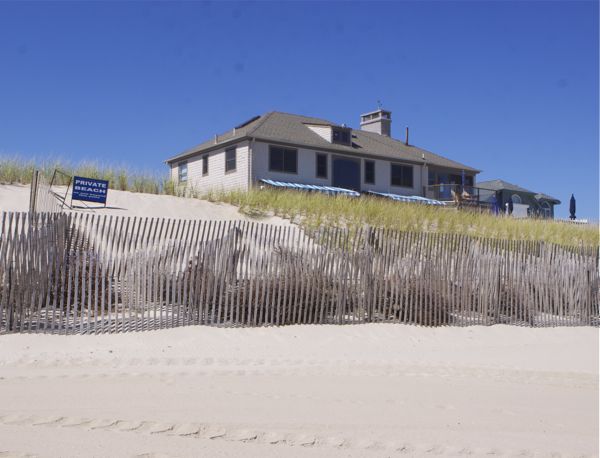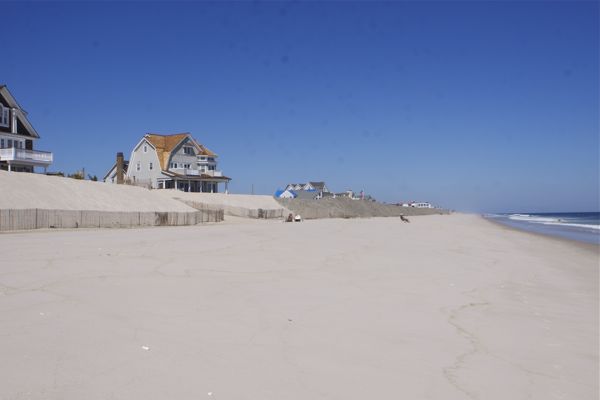EPA Puts Corporations In Charge of Superfund Cleanup Science
Are these corporations “qualified”, trustworthy, and good corporate neighbors?
EPA Refused Repeated Requests To Provide The Document for Public Review, and then Approved Ecological Risk Assessment with No Public Review
Last night, US EPA held a Community Advisory Group (CAG) meeting in Milford NJ to update the community regarding progress since the last April meeting in cleaning up the Curtis Specialty Papers Superfund site along the Delaware River.
Before getting to what went down at the meeting, let me set the context:
I) Context – The Delaware River Has a Big PCB Problem
I have been involved with this site, given impacts on the Delaware River and D&R Canal State Park, particularly with respect to potential ecological damages associated with off site releases of PCB’s to the river and the impacts of bioaccumulation on fish and birds.
The Delaware, a Congressionally designated “Wild and Scenic River”, is under NJ DEP fish consumption advisories for multiple species due to high PCB levels in fish tissue.
As a result, under the federal CLean Water Act, the Delaware River is designated as “impaired” due to high levels of PCB’s in fish tissue. Amazingly, DEP lists the Delaware PCB impairment a “low priority” for a cleanup plan called a “TMDL”. Even more revealing, the DEP does not even list contaminated sites as a source of the PCB’s. Instead, DEP protects polluters by using the general pollution source class “urban runoff.
The Curtis Papers Superfund site is contaminated with PCBs, which have migrated off site into a nearby creek and the River, and is located within bald eagle foraging habitat, a highly sensitive species to PCB bioaccumulation.
The lower portions of the river have exceedingly high levels of PCBs, which triggered a Clean Water Act mandated cleanup plan known as a “Total Maximum Daily Load” (TMDL), conducted by the Delaware River Basin Commission. A TMDL “Implementation Advisory Committee” is supposed to closely monitor and take special efforts to reduce PCB loads to the river, including the portions of the river above Trenton.
With the support of US EPA, The US Fish and Wildlife Service NJ Field Office previously rendered a formal “Biological Opinion” regarding PCB bioaccumulation impacts on Bald Eagle and Peregrine Falcon, recommending extremely low water quality standards to protect those PCB sensitive bird species.
Recognizing the PCB threats to the River from contaminated sites, DEP developed a targeted cleanup plan.
Based on the USFWS Biological Opinion, DEP also mandated specific new PCB monitoring, source track down and “pollution minimization plan” control requirements for sewage treatment plants.
Last, the NJ DEP previously had entered into a $1 million legal Settlement with the corporations, but that settlement was limited in scope and explicitly carved out any “natural resource damages” to the Delaware River and fish & wildlife.
The findings of the Ecological Risk Assessment (ERA) could establish the extent of those natural resource damages and trigger compensation and/or restoration requirements. Here’s a Court’s summary of that (the Crown settlement applies to “any and all properly”, which includes the Curtis site):
Check this out – focus on highlighted text – “any and all property”. According to a recent NJ Appellate Division decision:
Approximately six years after Crown purchased the landfill, it filed for bankruptcy protection in the Northern District of California. As part of those bankruptcy proceedings, it filed a motion under 11 U.S.C.A. § 554 to abandon its interest in this landfill, as well as several others that it owned and operated. The DEP objected to this abandonment because of the potential risks to the environment posed by abandoned landfills. To secure the DEP’s agreement to this motion, Crown agreed to pay $1 million to the DEP to be used “to investigate, close, clean-up, or otherwise remediate any environmental condition on any and all property” of Crown in New Jersey. Based upon this payment, the DEP withdrew its objection to the motion, and the bankruptcy court entered an order on March 2, 2001, authorizing the abandonment of this property. The order entered by the bankruptcy court simply referred to abandoning the property and did not mention the 1991 agreement that structured the manner in which the landfill was to operate, nor did it convey title to the underlying land.
Following entry of that order, the DEP used a majority of the funds from Crown to close up another of Crown’s landfills that it considered to require immediate attention. The DEP did no more with the Warren Glen landfill than to periodically visit it and to mow the grass to keep it from becoming overgrown.
An EPA consultant’s Report traces the ownership history
2.3.2 Ownership
Site owners and operators have changed through time among several entities, including Riegel Paper Corporation, Federal Paper Board Company, Inc., Riegel Products Corporation, James River Corporation, James River Paper Company, Inc., Crown Vantage and Curtis Papers, Inc. (including their predecessors, subsidiaries and other related ventures).
So, given this context, there should be an acute awareness and sensitivity to PCB risks to fish and wildlife and river water quality by EPA and US FWS and the larger Milford community.
II) What Went Down at Last Night’s CAG
When last night’s CAG meeting was announced by EPA in an August 2 email, I noted that it touted the completion of an Ecological Risk Assessment. So I immediately responded and requested a copy of the document. I followed up that request several times and was consistently put off by EPA.
After almost 2 months of foot dragging, EPA finally provided the document yesterday, just hours before the meeting, making it impossible to adequately review.
When I got to the CAG meeting, I noted that the Agenda stated that the Ecological Risk Assessment already was approved by EPA on September 4, 2013!
The bastards at EPA withheld the document and then approved it before I could even read it and raise concerns with US Fish and Wildlife Service (similar to what I did to force additional cleanup and downriver sampling in Dupont Pompton lakes site).
Looks like EPA and the corporations desperately were trying to avoid a repeat of that!
So, my skepticism grew about the content of the Ecological Risk Assessment, given this abuse and bad faith on the part of EPA.
The meeting began with a presentation by a private consultant for the polluters (AKA “responsible parties”), Georgia Pacific and International Paper. The consultant presented the Baseline Human Health Risk Assessment and the Ecological Risk Assessment (ERA).
I was stunned by some of his statements consistently downplaying risks and omissions of all the sensitive PCB scientific and regulatory issues mentioned above.
I had superficially scanned the Executive Summary of the ERA before the meeting, and although I am no scientist or expert, noted questionable methods and findings. I noted that the entire analysis was based solely on a model, not actual sampling of fish and wildlife tissue, egg shell residues, or bird breeding success.
The ATSDR Health Assessment previously noted the lack of sampling data, and recommended sampling of sediments and biota. The remedial investigation of the site is not complete. So I found this avoidance of fish and bird sampling suspect (more to follow on these technical and regulatory issues in a subsequent post).
During the meeting, in response to my questions and comments – which went unanswered by the consultant – EPA repeatedly assured me and the community that “US FWS has reviewed and approved” the ERA. The EPA case manager also stated that a model was “more rigorous” and conservative than sampling data. I will look into the USFWS review process.
At the end of the hearing, I tried to explain to the community why the consultant’s work should be treated skeptically, given the economic conflicts of interest his client has.
Why does EPA allow a corporation to control the science of a Superfund cleanup?
Section 104 of the Superfund law authorizes EPA to allow an RP to conduct the investigations if the studies will be done “properly and promptly” and EPA determines that the RP is “qualified” to do so.
But it looks like the only “qualification” of these corporations seems to be their ability to write checks to EPA to pay for their oversight costs.
Here is how the federal Agency for Toxic Substance and Disease Registry described the behavior of these corporations at the site – is this trustworthy corporate behavior?
Regulatory and Remedial History
In August 2001, Curtis Papers Inc. submitted a preliminary assessment report and remedial investigation work plan to NJDEP as part of an effort to comply with the Industrial Site Recovery Act (USEPA 2008). The company identified 20 areas of concern (AOCs) at the Curtis Specialty Papers facility. In July 2003, Curtis Papers Inc. shut down the operations. There is no documentation of remedial activities occurring at the AOCs prior to the shutdown. The facility was abandoned and left unsecured. Since the abandonment of the facility, it has been repeatedly vandalized and scavenged for materials (Tetra Tech 2007). In October 2006, New Jersey Department of Environmental Protection (NJDEP) initiated emergency response measures that included securing visible oil and hazardous materials containers, removal of approximately two dozen drums and lab packs from the site, and classifying materials for waste disposal. NJDEP also constructed a fence around a majority of the property to secure the site (Tetra Tech 2007).
In February 2007, NJDEP referred the site to the USEPA for a potential CERCLA removal action. From June 11, 2007 until December 2008, USEPA performed a removal action at the site. This action included removing approximately thirty pallets of containerized waste (i.e., drums, pails, small containers), numerous vats, and radiation sources. In June 2009, the USEPA executed a Settlement Agreement and Administrative Order on Consent with Georgia-Pacific Consumer Products and International Paper for performance of the Remedial Investigation/Feasibility Study. Under the June 2009 Administrative Order, the two companies implemented measures to add to site security and restrict site access (USEPA 2010). Presently, a barbed-wire and chain-link security fence restricts access to the main mill area and the coatings building. Additional fencing restricts access to the aeration basins. A 24-hour security service maintains a presence on site and conducts routine site inspections. In November and December 2009, additional site maintenance activities were implemented, including:
In subsequent posts, we will go into some of the regulatory and scientific details of the issues we outlined above.





